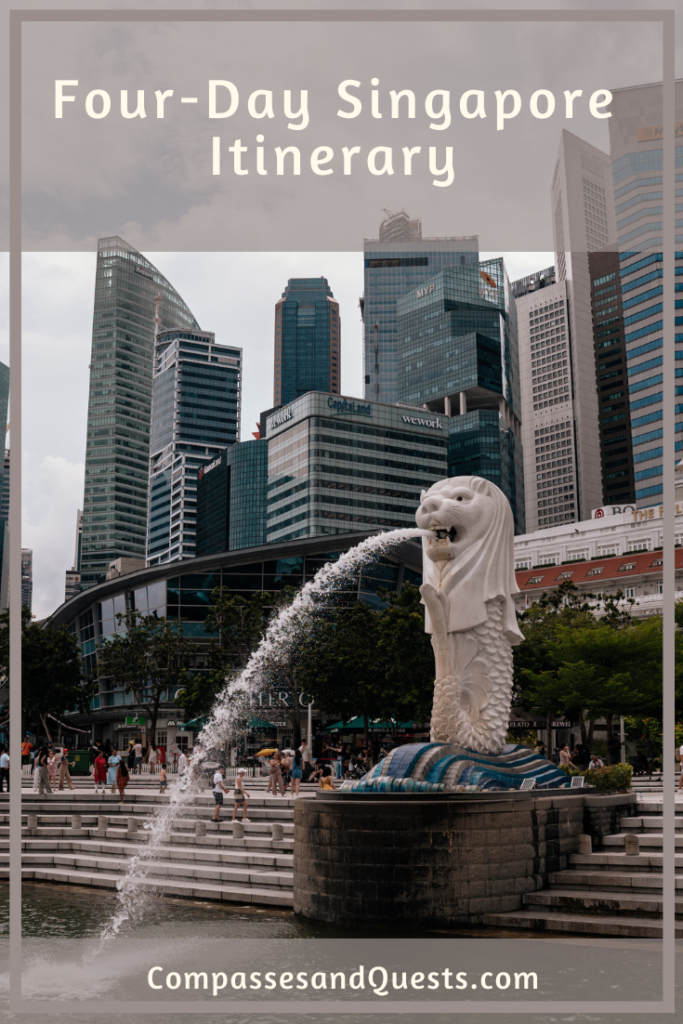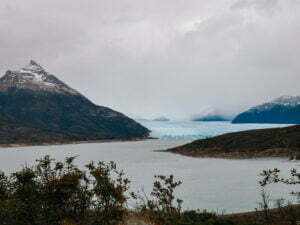Singapore is such an interesting place packed full of unique activities. Whether you’re just passing through on a long layover or planning to spend several days here, we think there are plenty of attractions any traveler could enjoy.
I grew up in Indonesia and my family traveled through Singapore often. This country is ever-evolving, with new attractions and interesting things to see popping up all the time. It had been a long while since I had been back and it was Matt’s first-ever visit to Asia, so we were eager to spend a few days exploring before hopping over to Indonesia. Here’s our four-day Singapore itinerary!
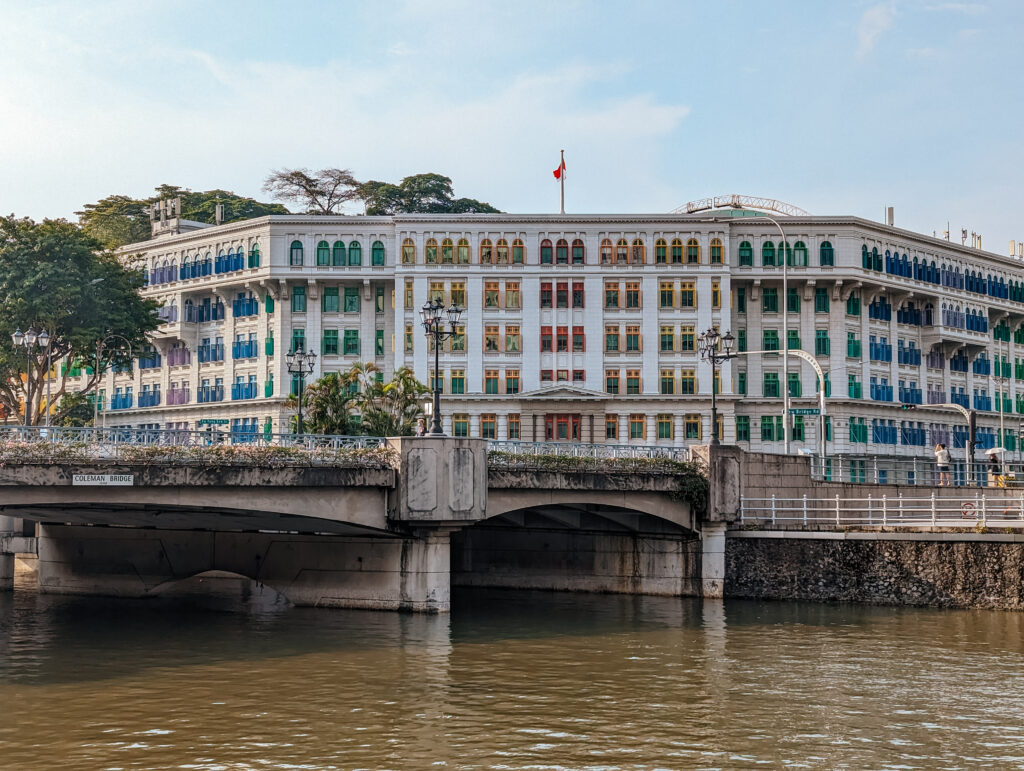
Day 1
We arrived in Singapore the night before after a long couple days of travel from the U.S. With that and the jetlag in mind, we decided on a fairly chill and relaxing first day in Singapore.
Sentosa Island
Cost: There are some activities on the island that can be done for free. However, others require a ticket.
After grabbing breakfast by our hotel, we took the MRT to VivoCity and walked over to Sentosa via the pedestrian path. Sentosa is an island resort that has ample dining and shopping options, beaches, golf courses, Universal Studios, historical sites, and various other activities.
Our day on Sentosa consisted of visiting Fort Siloso, taking in the views from some of the higher viewpoints on the island, relaxing on the beach, and strolling down the pretty paths to just see the sights. For more on our day on Sentosa Island and other things to check out while you’re there, see our other post!
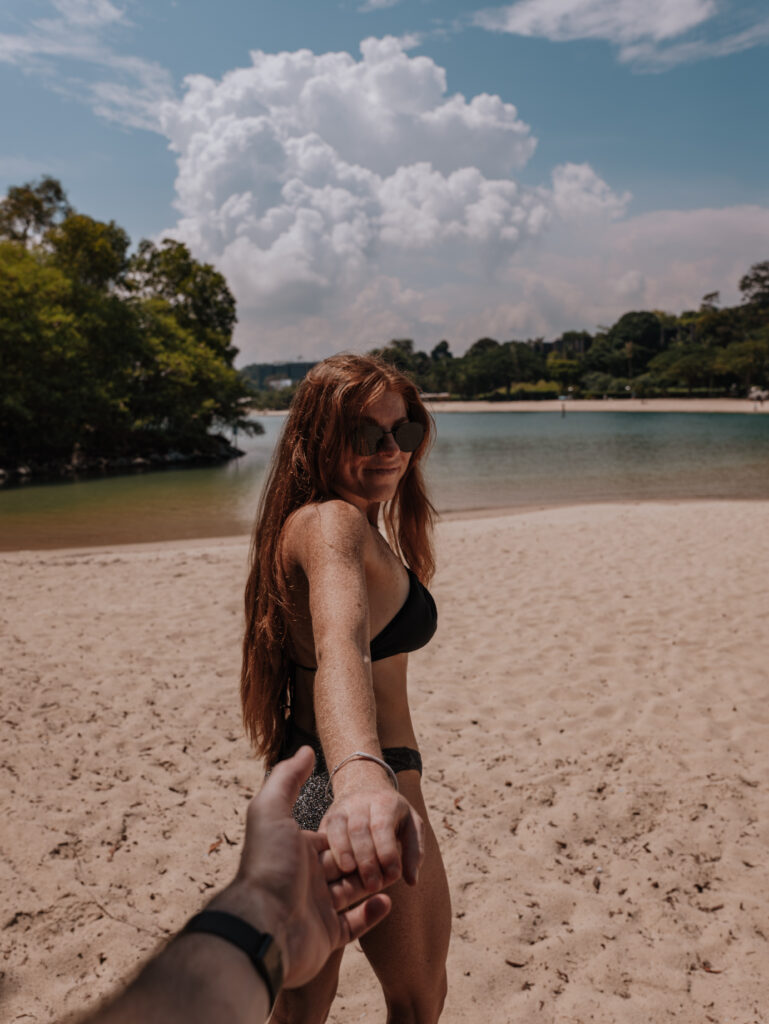
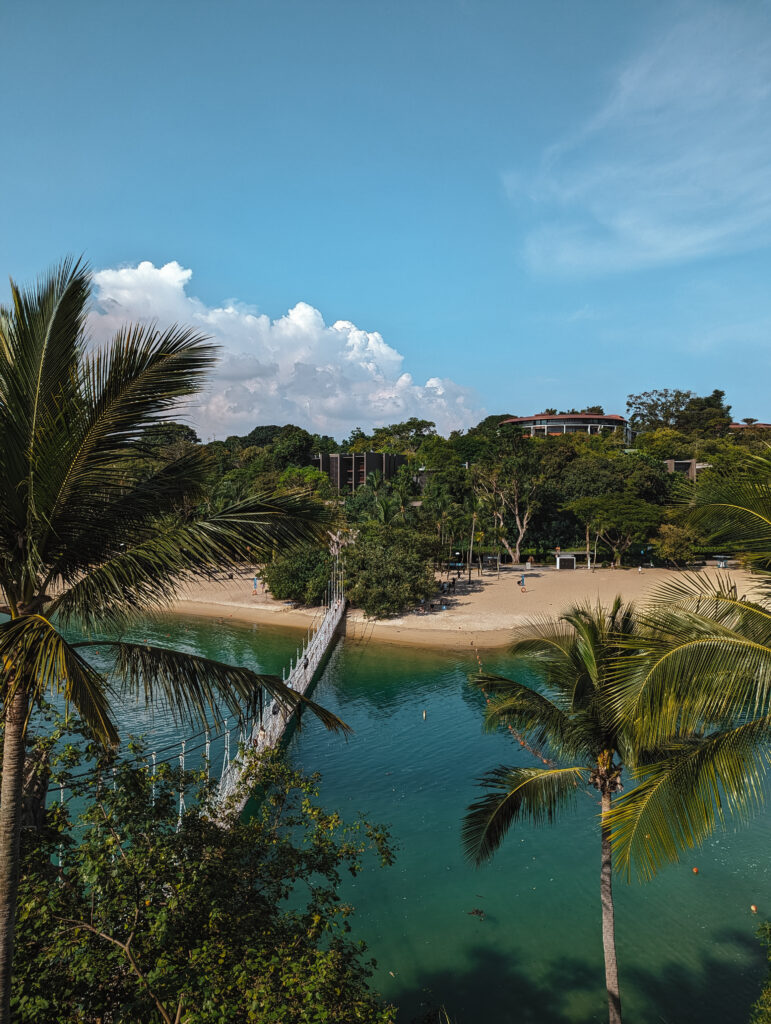
VivoCity
VivoCity is the large mall and transport hub just on the other side of the bridge from Sentosa Island. We had planned to stay on Sentosa until after sunset and for dinner, but we were pretty tired from the jetlag and hot. So we headed back to VivoCity to get dinner, enjoy the AC, find an ATM, and walk around the mall a bit.

After dinner and meandering around, we headed back to the hotel.
Day 2
Our second day, we planned to just walk all around the heart of Singapore city, exploring the different neighborhoods, checking out some of the notable spots, and eating delicious food as we went.
Kampong Glam
We walked from our hotel to the Kampong Glam district, stopping to get a late breakfast at the Golden Mile Food Centre along the way. If you want to experience the area with all of the shops and restaurants, we wouldn’t recommend getting here until mid-day when more establishments are open. If you want to visit the area without many people around, come earlier in the morning.
Kampong Glam is Singapore’s Muslim Quarter. As you walk around this vibrant area, you’ll see interesting murals and many colorful 19th-century buildings where various restaurants and shops are located. Haji Lane is perhaps the most popular spot to visit with many cafes, restaurants, and boutiques lining the street.
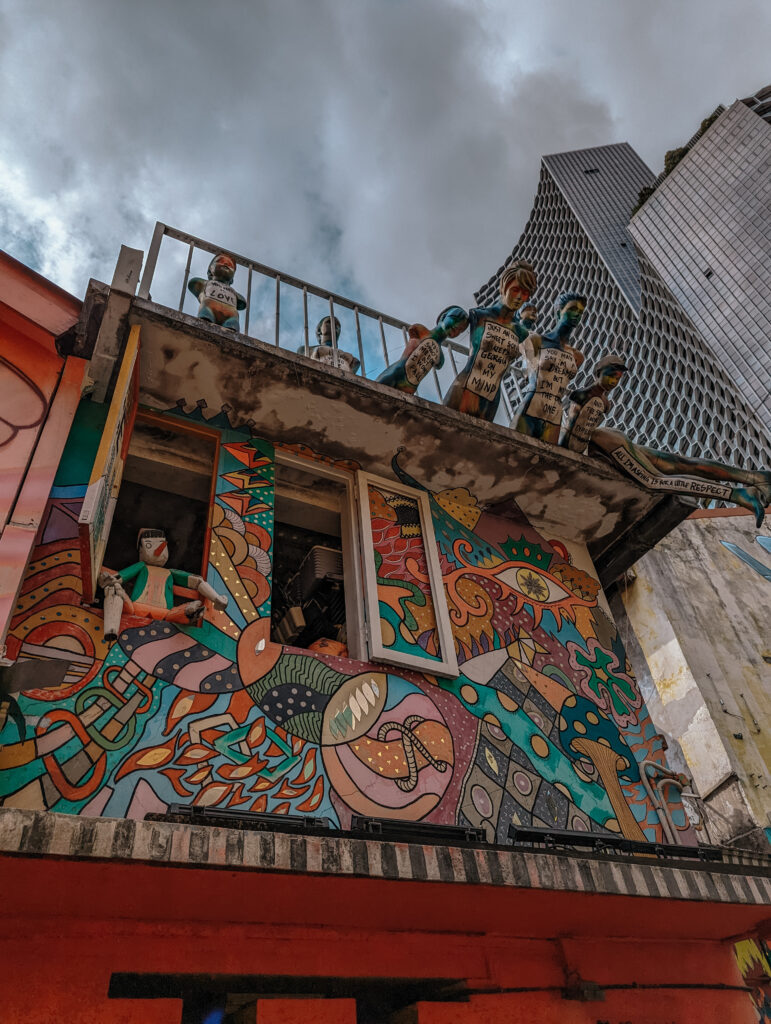
At the heart of the district is the Sultan Mosque. You really can’t miss this pretty building with its white walls and large gold dome. If you want to see the interior, you can go in during visiting hours. If you choose to visit, note that they have robes available at the desk, but if there aren’t any available, you won’t be permitted to enter without proper attire. For more info on the regulations and updated hours, visit the site.
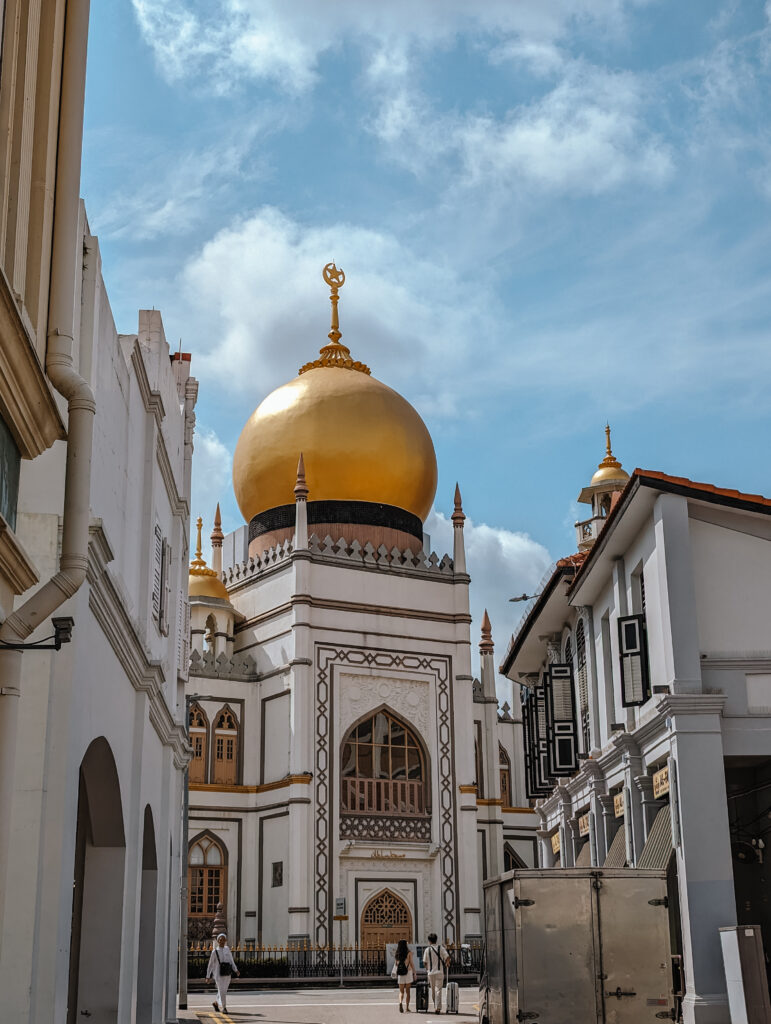
Little India
Little India sits just across the Rochor River from Kampong Glam. This neighborhood is equally as vibrant with bright buildings and bustling markets.
Points of interest in this area include the Sri Veeramakaliamman Temple, Indian Heritage Center, and the Tan Teng Niah House. We enjoyed walking through the markets and just taking in the sights of the area.

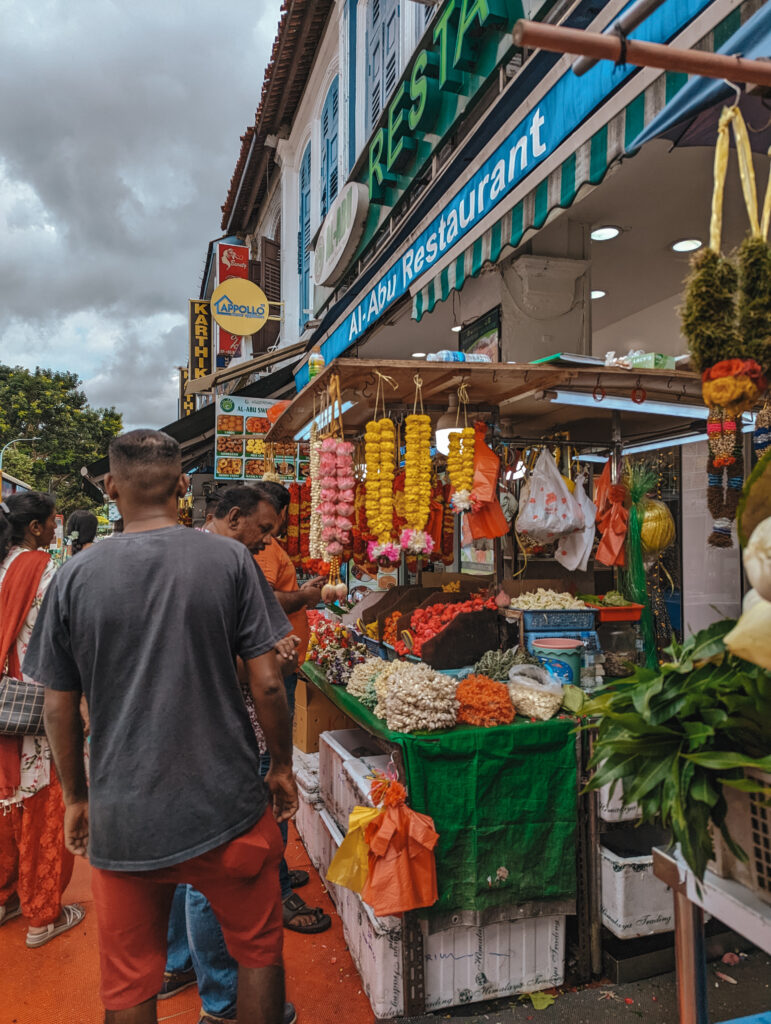
Armenian Street
After Little India, we made our way towards Armenian Street, stopping by the Kwan Im Thong Hood Cho Temple and grabbing lunch along the way.
Armenian Street is a short historic road with interesting architecture. The street was built in the early 1800s. The Armenian Church of St. Gregory the Illuminator, which is the oldest church in Singapore, and some businesses were built shortly after.
Today, there are various museums here, including the Peranakan Museum and Armenian Heritage Gallery. The street is short and it was pretty quiet when we visited, but it’s worth a stop if you’re in the area or want to visit one of the museums.
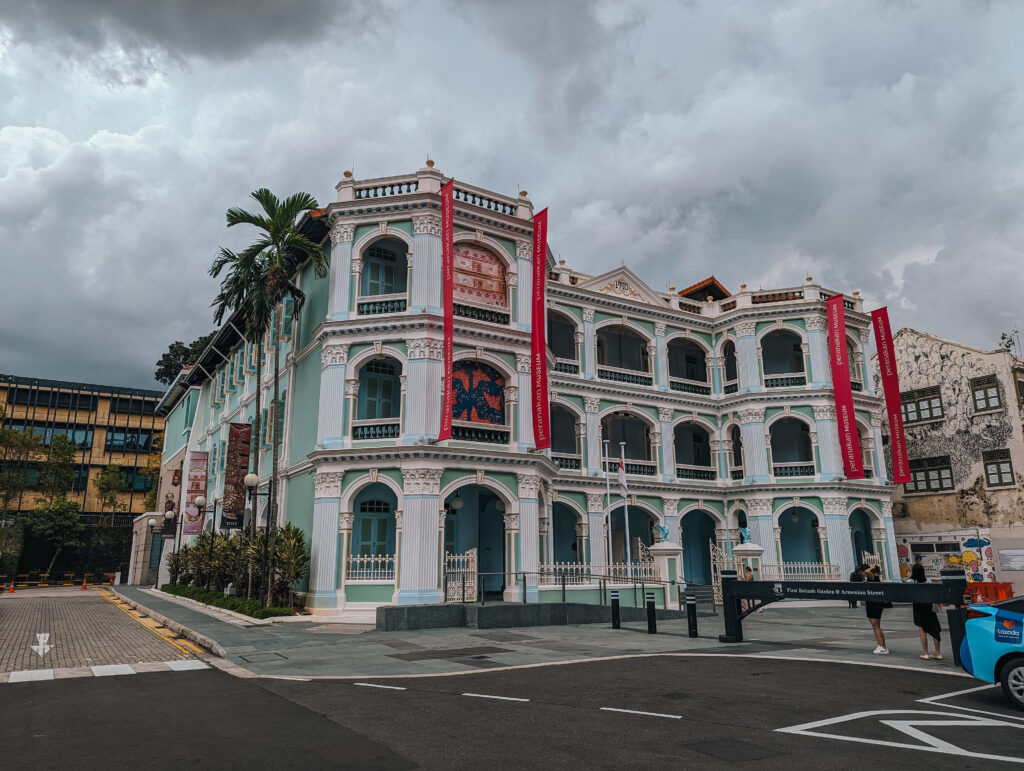
Fort Canning Park
Cost: Visitors can access the park and some of the historical sites free of charge.
Singapore has many beautiful parks and green spaces, and Fort Canning Park is conveniently located in the heart of the city near to many attractions. A hilltop fort used to sit here, and remnants of it can be seen as you walk through the park. Long before that, there was a palace here. Head to the Fort Canning Heritage Gallery to learn more about this site’s significance and see some of the artifacts recovered in the area.
Throughout the garden are lovely paths and some sculptures. There’s also the Fort Canning Tree Tunnel, which is a very popular spot to take photos. Get here early if you want to snap a pic, otherwise there will be a line. Anybody who tells you this spot is a “secret” must not have been in a while. The line to take a photo went all the way out the other end of the tunnel. We just walked through and went on our way.
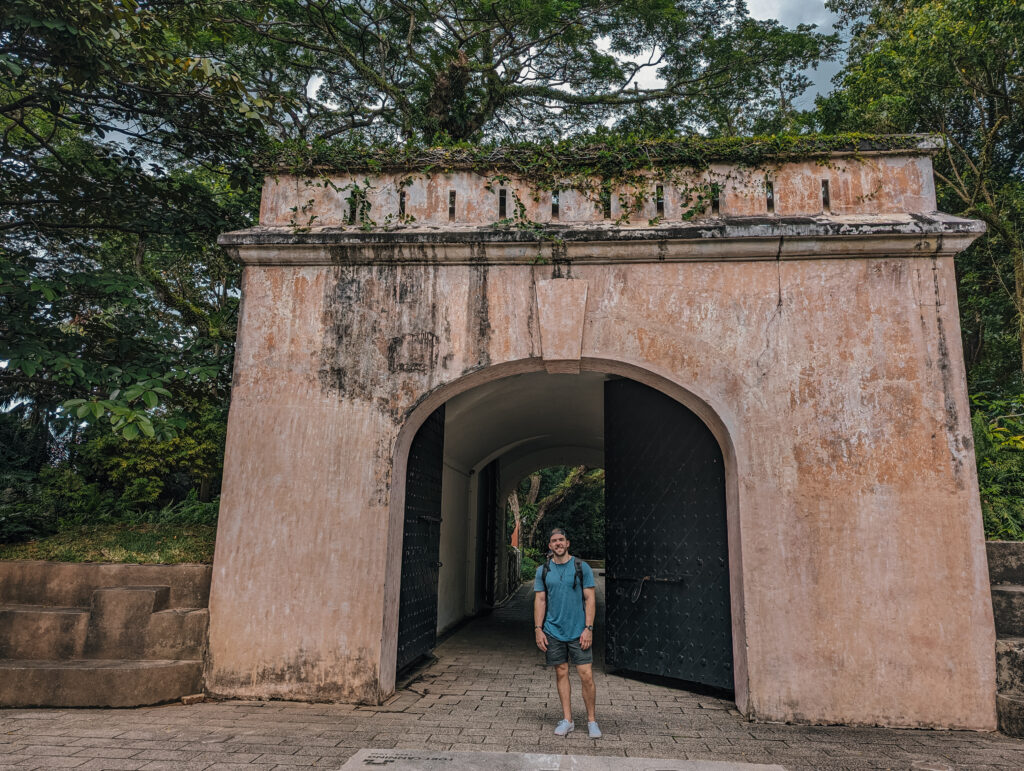
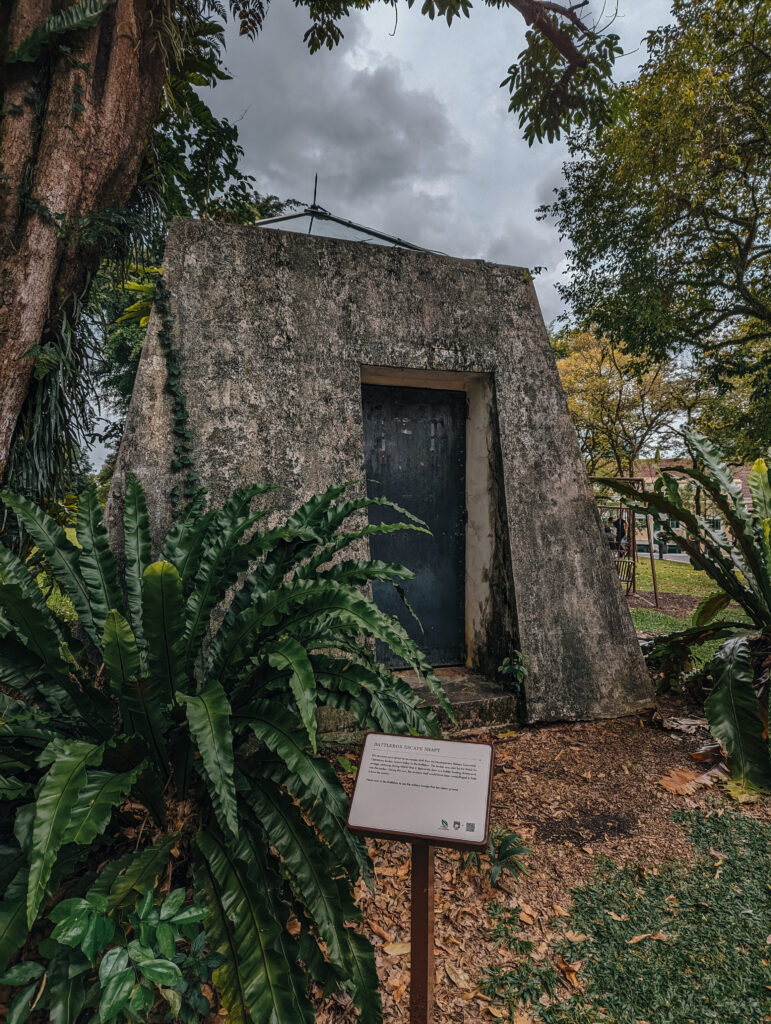
Merlion Park
The Merlion is an icon of Singapore. This mythical creature has the body of a fish, highlighting Singapore’s beginnings as a fishing village, and the head of a lion, referencing the story of a lion sighting by a past prince which led to the naming of the island as Singapura (lion city in Sanskrit). It was designed in the 1960s for the Singapore Tourism board.
Merlion Park contains a large statue of this creature shooting water out of its mouth. It sits overlooking the water with Marina Bay Sands and Gardens by the Bay across the way. This area is a great spot to take in views of the city. There are also vendors and shops around selling Singapore souvenirs and Merlion-shaped snacks. Note that if you’re not there fairly early in the morning, it will likely be quite busy here.

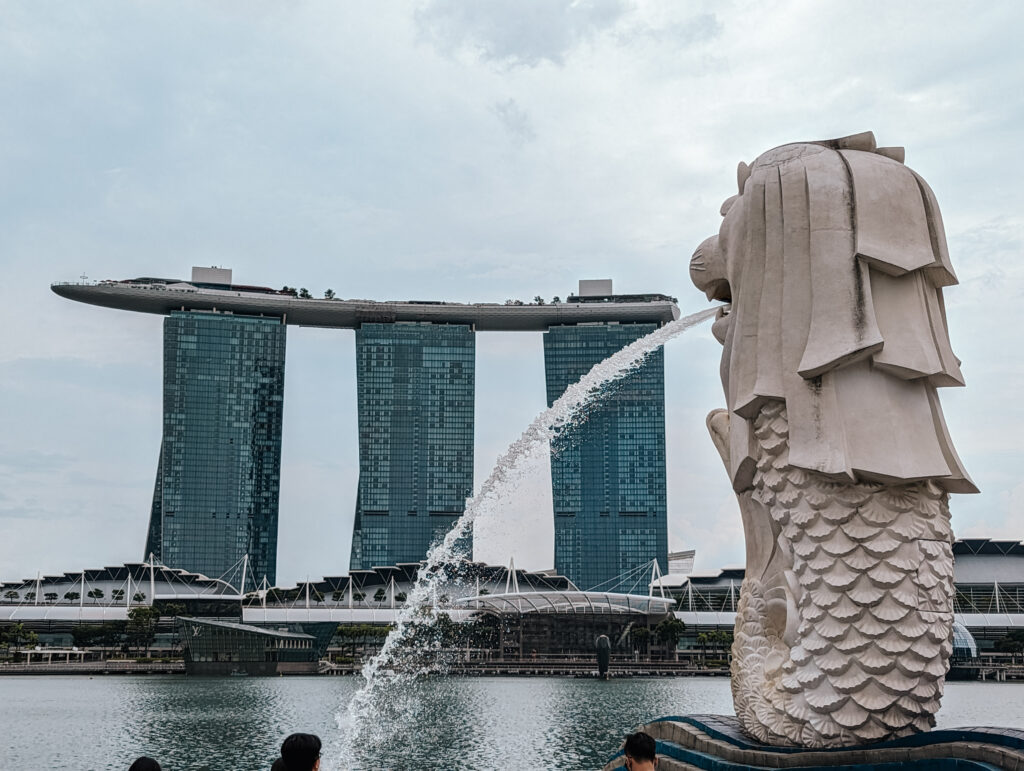
Helix Bridge
From the Merlion, we walked north over the Jubilee bridge, by the Esplanade complex, and over the Helix Bridge. This unique bridge crosses the water to the Marina Bay area. It’s made of steel beams that resemble a strand of DNA, hence the name. There are a few platforms along it, offering great views of the city over the water.
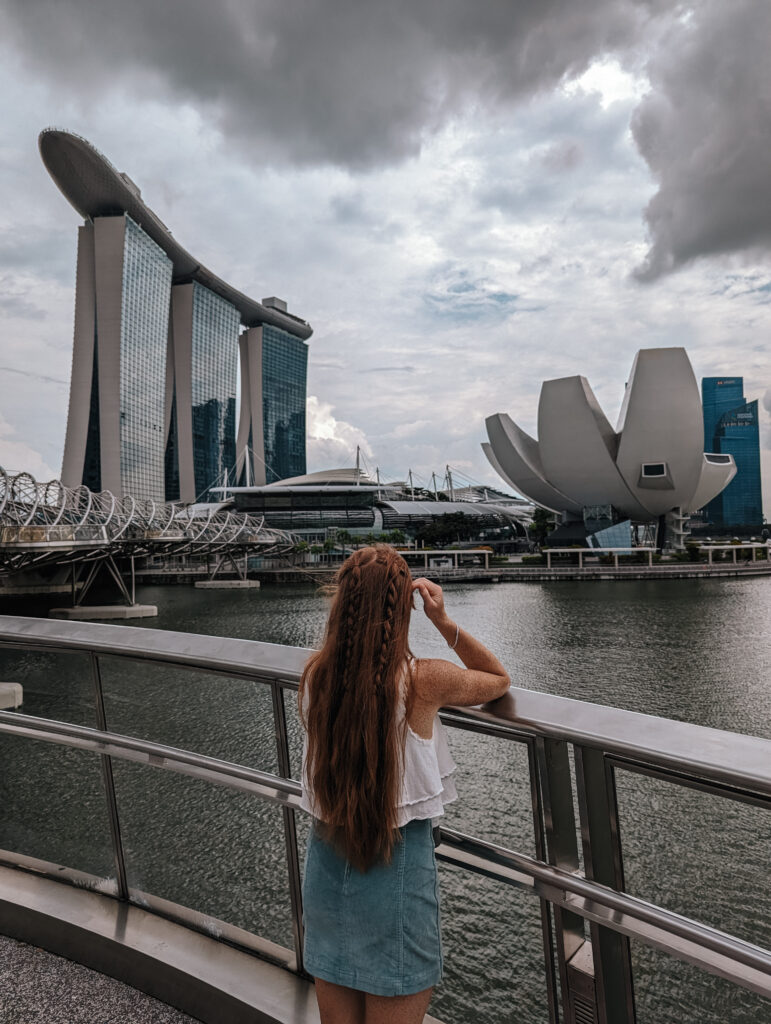
Gardens by the Bay
Cost: You can access much of the gardens and watch the light show for free. If you plan to enter the Cloud Forest, Flower Dome, and some of the other attractions within the gardens, you may need a ticket. Tickets range from SGD$14 to SGD$59 per foreign adult depending on the attraction or package you select.
Gardens by the Bay is one of Singapore’s current most popular attractions. The area contains a variety of gardens holding so many different species of plants from around the world, pretty water features, relaxing paths, the iconic Suptertrees, and more.
We arrived to the gardens in the late afternoon and stayed until after the nightly Garden Rhapsody show. Before the show, we walked through the various garden areas, took in the views from the Supertree Observatory, and ate dinner at Satay by the Bay. The Supertree Grove and all of the surrounding gardens were equally as beautiful once the sun went down and the park lit up. Learn more about visiting Gardens by the Bay here!
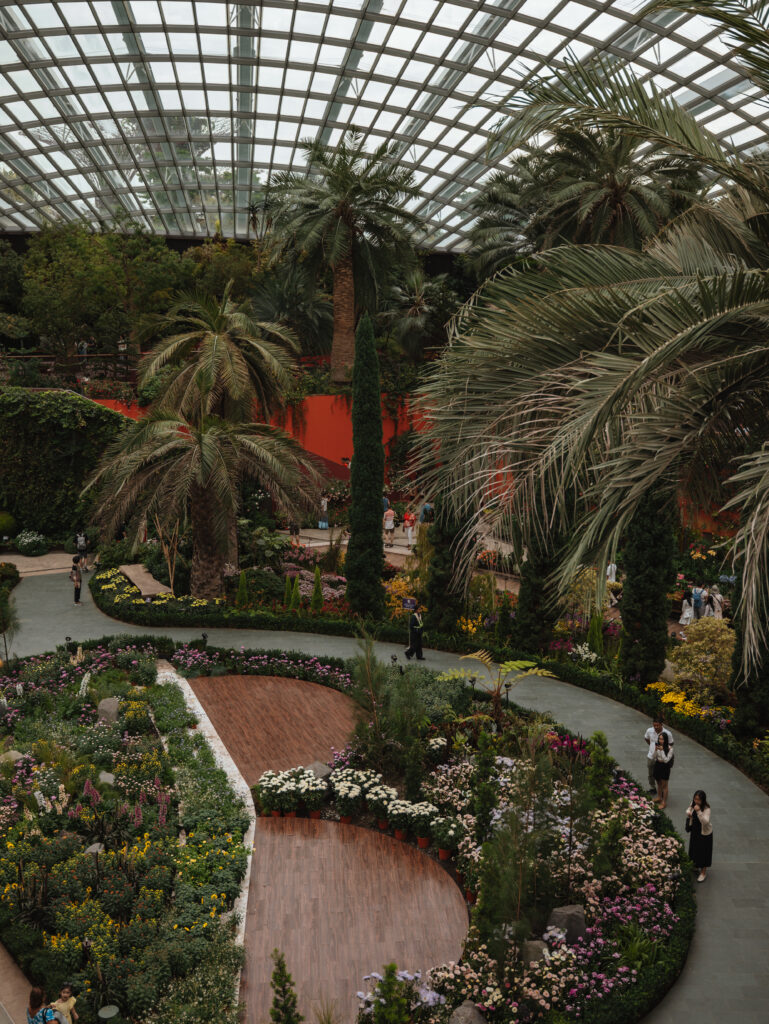
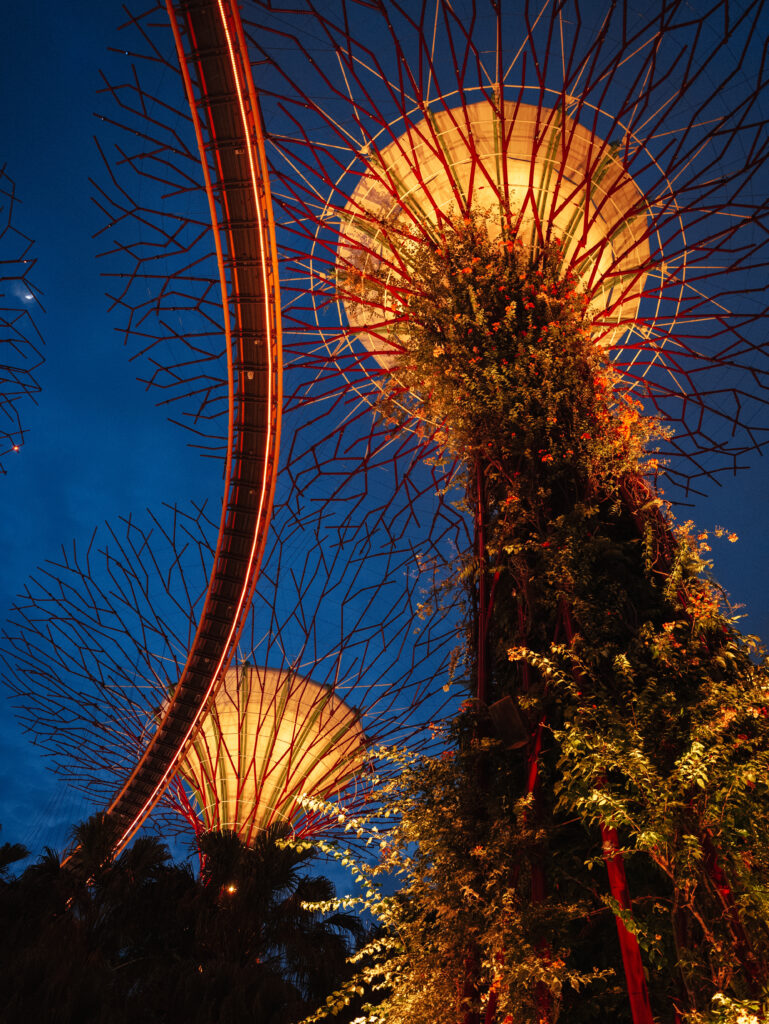
Day 3
We always love to get out into nature wherever we travel, so we headed outside of the city center this day for a little hike. We took the MRT to the Upper Thomson area and grabbed a bite for breakfast beforehand.
MacRitchie Treetop Walk & Windsor Nature Park
Cost: Free to access the trails in the park.
The MacRitchie Treetop Walk and Windsor Nature Park sit within Singapore’s Central Water Catchment Reserve. There are various reservoirs, forested areas, and trails here, making this a popular place to get out and enjoy nature.
We started at Windsor Nature Park and walked the trails to the MacRitchie Treetop Walk. This is a long bridge suspended among the canopy, offering views over the surrounding jungle. The bridge was pretty cool and we saw a lot of monkeys, birds, lizards, and butterflies as we hiked. Read more about our excursion here.

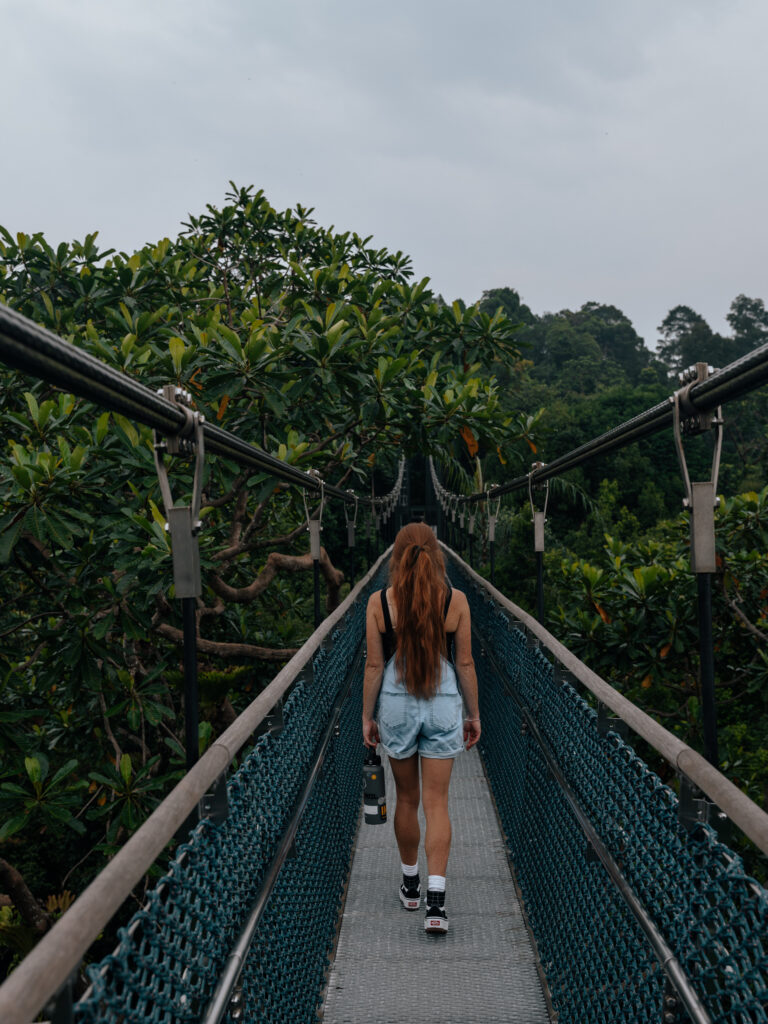
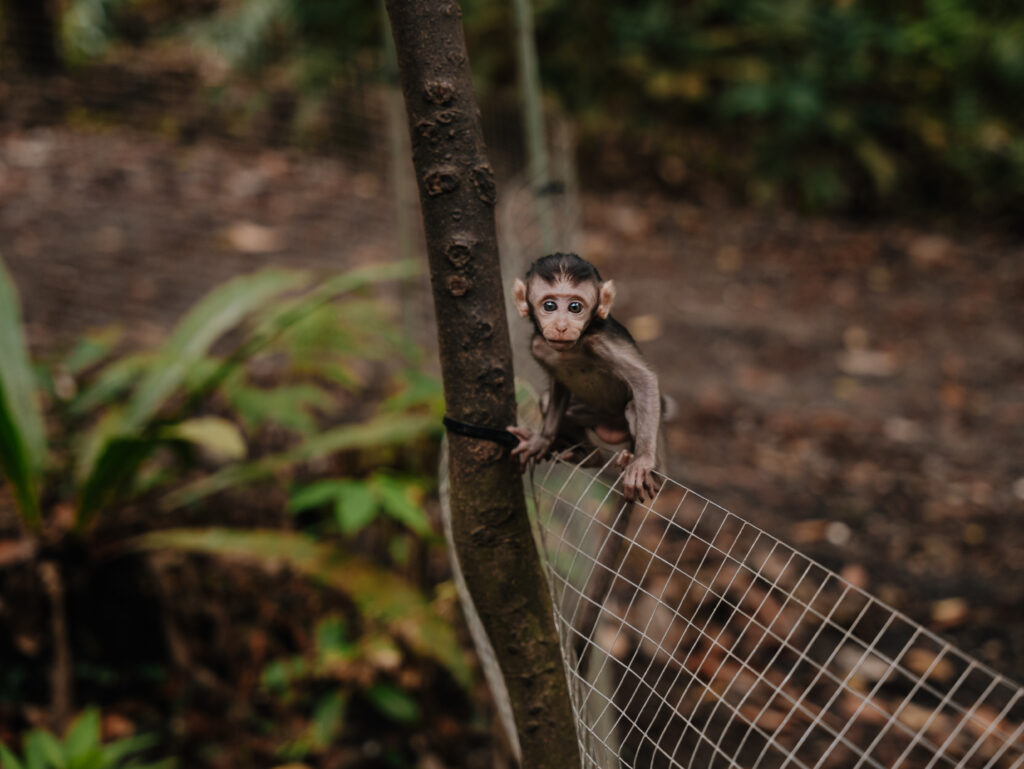
Upper Thomson Area
Before catching the rail back into the heart of the city, we walked around the Upper Thomson area for a short bit. This area isn’t as touristy and is more residential. There are still various shops and great restaurants around.

Chinatown
We headed back into the city to walk around Chinatown. In this area, you’ll find Pagoda Street and Temple Street where many market stands and shops are located. Vendors sell anything from local fruits and street food to fine suits, house plants, and artwork. This may be a good place to head if you’re looking for souvenirs.
We also walked down Telok Ayer Street where there are various shops with colorful traditional facades. Other notable sights to consider stopping by in the area include the Buddha Tooth Relic Temple and Sithi Vinayagar Temple. The Chinatown area also has many great restaurants and some food centers.
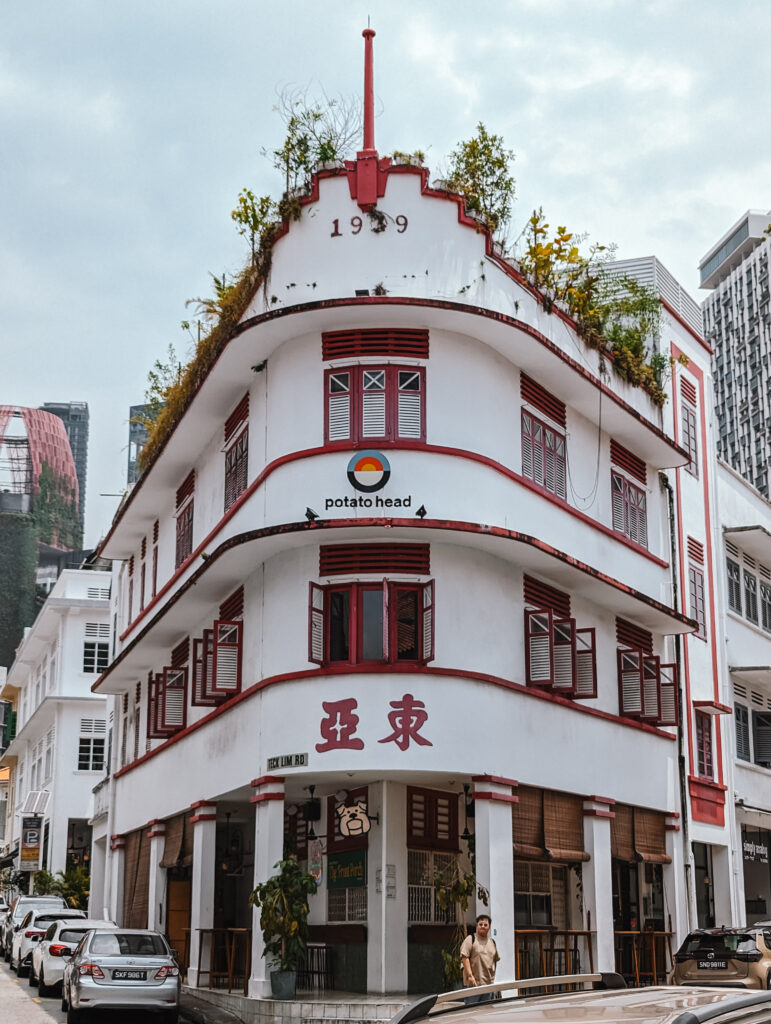
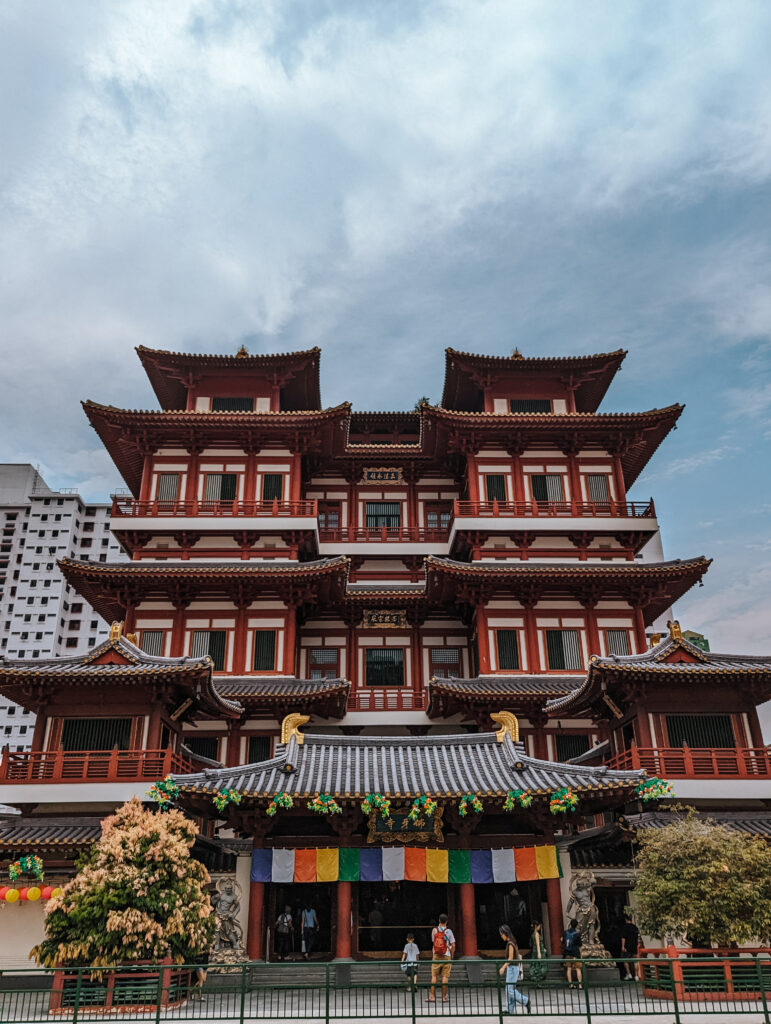
Clarke Quay & Boat Quay
After exploring Chinatown, we walked over to the Clarke Quay and Boat Quay area since we didn’t explore it much the day before. These spots sit on the Singapore River and there are tons of shops, restaurants, and bars. The area is known for its nightlife. The quays are also popular spots to embark on a boat tour around Singapore’s waterways.
We spent a while taking in the views along the river and walking down the lively streets. With all the malls and shops in the area, we also did a little shopping. This place really was bustling!
We had planned to eat dinner around here and stay out a bit since it was Saturday night, but alcohol in Singapore is wildly expensive and even more so around this area. So, we headed back to the area around our hotel.
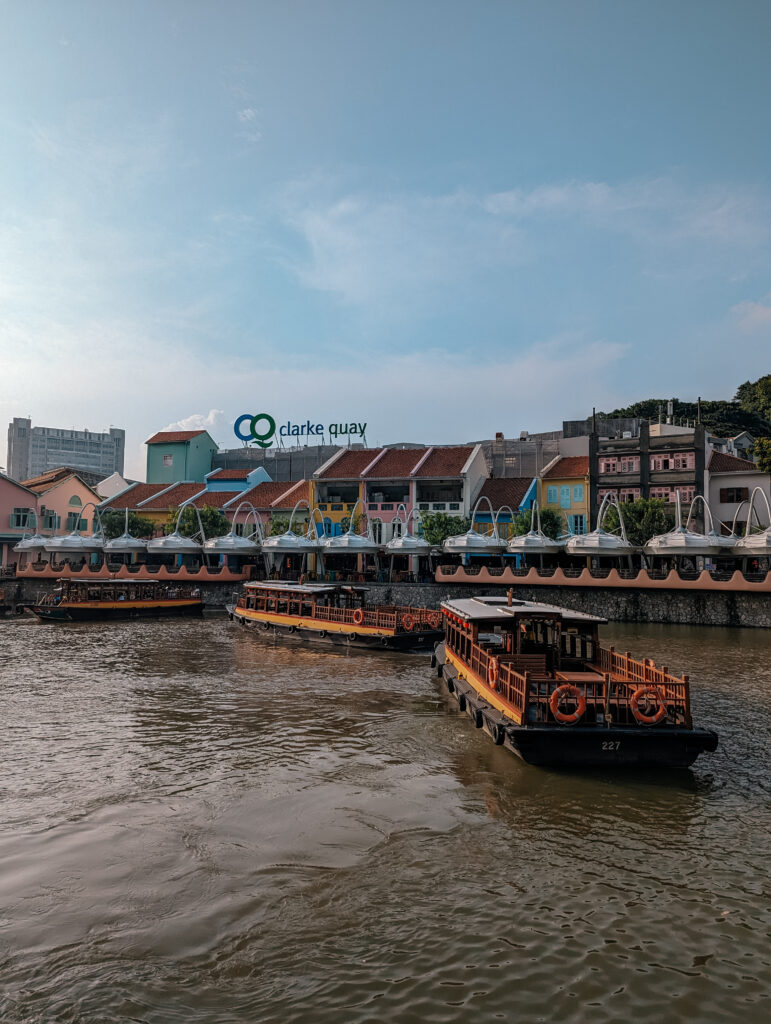
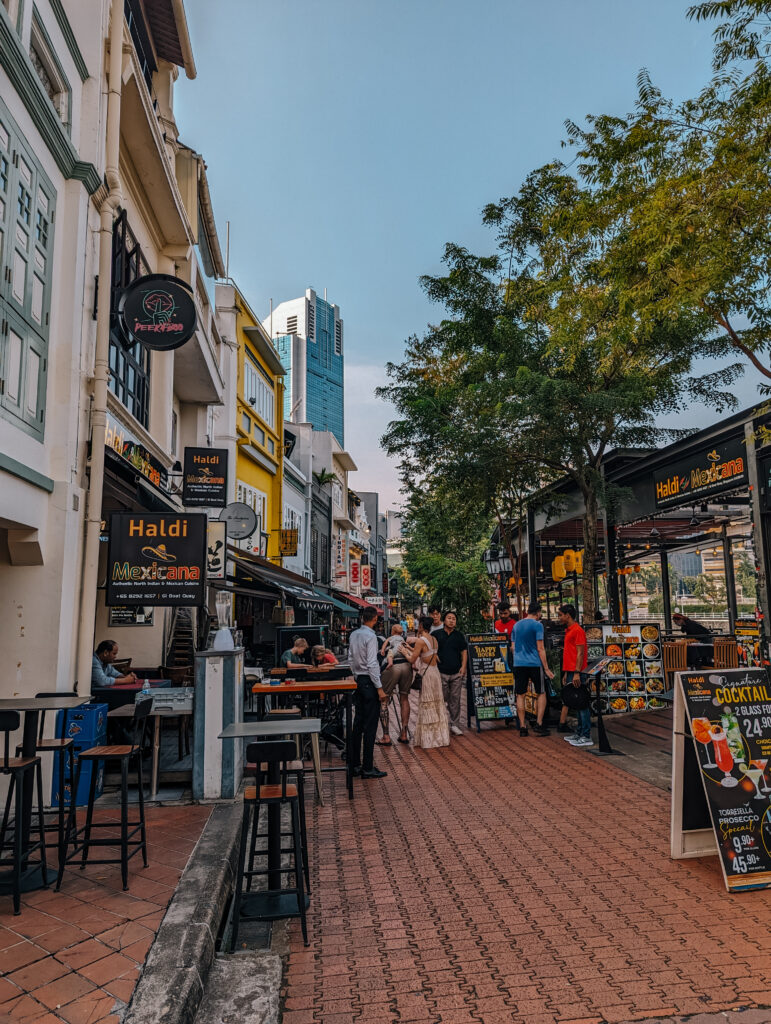
Dinner in the Geylang Area
The streets were also very busy near our hotel, and when we stopped to look at a menu at a crowded patio area, a lady quickly invited us inside. Before we really knew what was going on, we found ourselves in a sort of beer hall/restaurant that we still don’t know the name of.
It was very loud in there and there were girls constantly rushing beers to the guests – many of whom you could tell were already several beers deep. It was an interesting, but fun environment and the food was delicious! The beer was cheap by Singapore standards, so we also enjoyed a few before calling it a night.

Day 4
Explore the Geylang Area
Beyond dinner the night before and the walks to and from the MRT, we hadn’t seen much of the area around where we were staying. It was our last morning in Singapore before flying to Indonesia, so we decided to stroll around.
The Geylang district is less touristy than others closer to the city center. This neighborhood has been known as a “troublesome” area of Singapore as the red light district and a place where gambling and other illegal activities take place.
The crime rates have decreased in more recent years with government crackdowns and other variables and we didn’t feel unsafe walking around day or night. There were various markets selling household goods and food items, plenty of restaurants, and other businesses in the area.
Our walk this day didn’t last too long since it started pouring rain. So we checked out of our hotel and headed to the airport.
Jewel Changi & Changi Airport
Cost: Some of the activities in Jewel and the terminals are free. However there are various attractions that require a ticket. Ticket prices start at SGD$8 per foreign adult with other attractions and ticket packages costing more.
We generally wouldn’t head to the airport any earlier than necessary. But Changi is an exception because there are many interesting things to see and do here. It’s consistently rated as one of the top airports in the world!
Jewel Changi is accessible by the public, so we’d recommend checking in early and visiting before you pass through security into the terminals. This is a massive mall of sorts with movie theaters, shops, restaurants, activity parks, and the famous Shiseido Forest Valley and Jewel Rain Vortex. There’s plenty to do in the terminals as well, from shopping and dining to visiting the various gardens and admiring the art pieces.
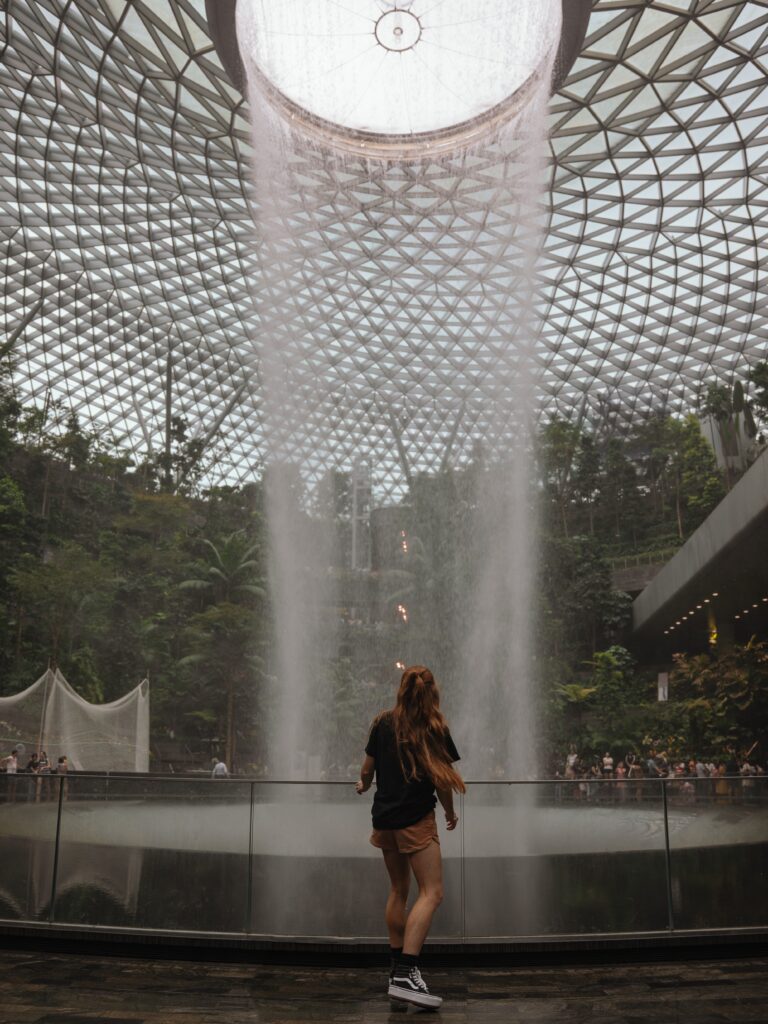
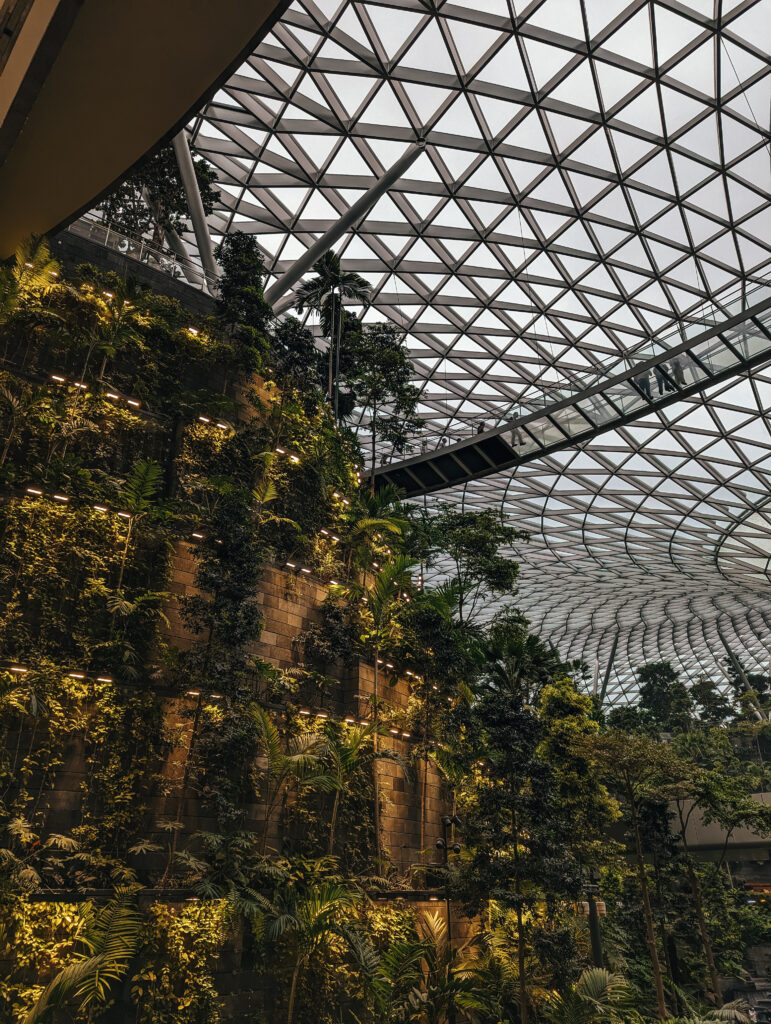
We dropped off our checked bags and headed to Jewel where we spent some time admiring the tall indoor waterfall and wandering the shops. We ate lunch here before heading into the terminals. Before making our way to our gate, we explored the various attractions and did a bit of shopping. Read our other post for details on all of the activities in both Jewel and the Changi terminals.
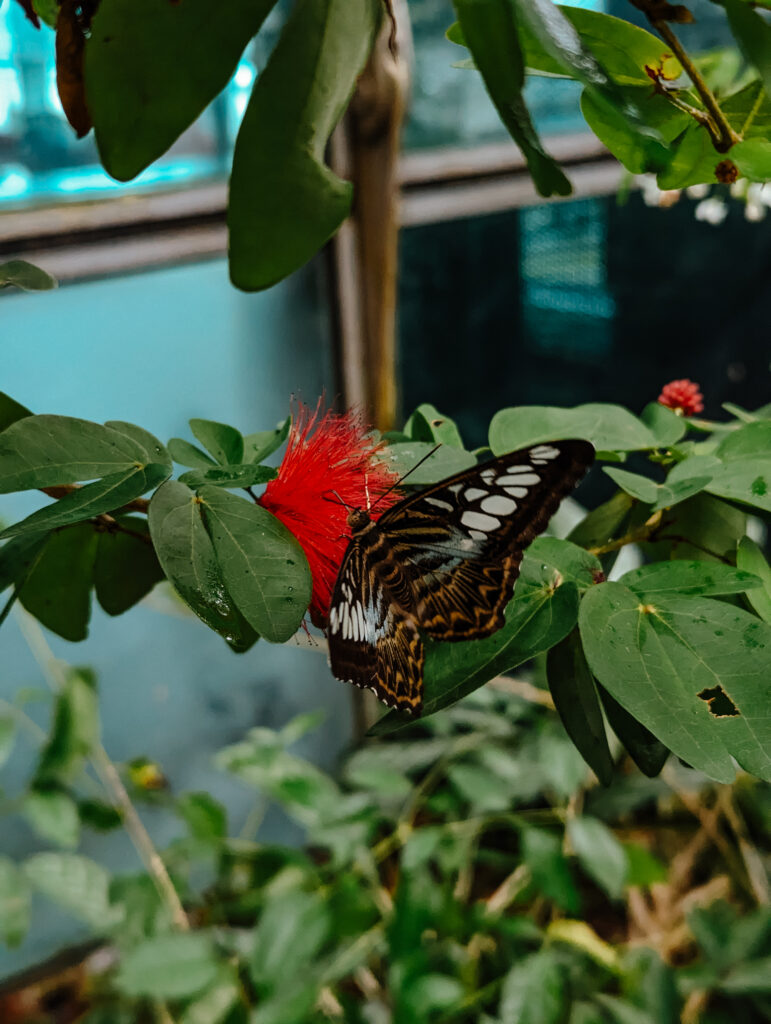
Notes on Our Singapore Itinerary
We walked around the city quite a bit to be able to see as much of it as possible. But it is huge and the attractions you may want to visit can be spread out. Luckily, Singapore has a very convenient public transport system that we found easy to navigate. We took the MRT frequently during our time there. Find maps and more info on getting around on the transport site.
Most attractions in Singapore that require the purchase of tickets provide the option to buy them online in advance. We’d definitely recommend buying tickets in advance for popular attractions, like Gardens By The Bay, so tickets don’t sell out or so you don’t have to wait in extra lines to purchase one.
There are so many other things to do in Singapore that we didn’t get to during this visit. Much of our time in the country on this visit consisted of just walking around and taking in the sights, but there are so many tours, museums, and other activities you can add to your itinerary. We’ll definitely be back to see more!
Like this Post? Pin it!
